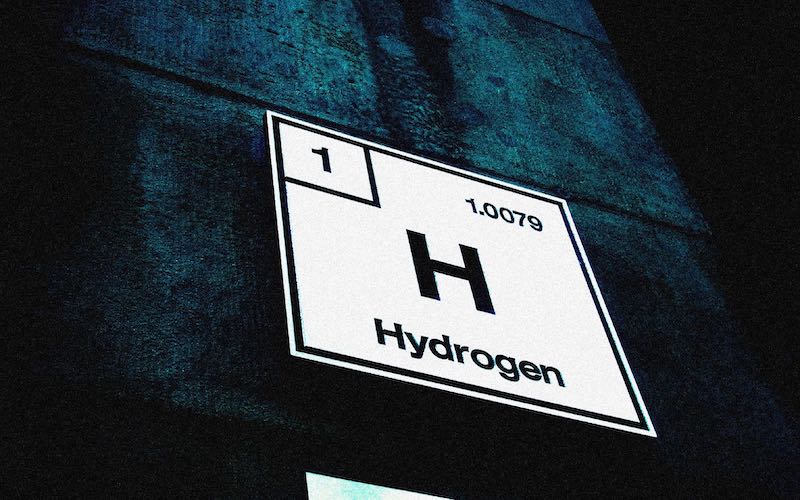
While clean hydrogen can play a limited role in cutting carbon pollution, it can't replace using solar and wind-generated electricity directly. Photo: Flickr, Matthew Bodaly
There’s been a lot of hydrogen hype in the past few years as people get serious about ending our reliance on fossil fuels. But what role does hydrogen have to play in a clean energy economy? Connecticut is the first New England state to draft a roadmap for how hydrogen can help meet our goals for cutting climate-damaging pollution.
The fossil fuel industry and utility companies are especially enthusiastic about hydrogen. But as the Connecticut roadmap draft concludes, using hydrogen to completely replace fossil fuels is a bad investment. And where hydrogen can be used, it should be “clean” – in other words, produced using renewable energy sources.
Let’s dive into what state regulators outline in their roadmap and why hydrogen can’t beat solar and wind as the primary replacement for the fossil fuels overheating our planet.
Hydrogen 101
Hydrogen is an element that can be burned, just like natural gas, to produce energy. Hydrogen exists naturally as atoms in the air, water, and living things. However, there isn’t enough of it in its usable, pure gas form to replace gas or oil for heating and powering our lives. Consequently, we have to create hydrogen using other fuels. And that’s where the problem lies.
Most hydrogen is created using natural gas, which causes more climate-damaging pollution. And burning hydrogen for heat and electricity produces other pollution like nitrogen oxides, which harm human health and the environment. That’s why the Connecticut hydrogen roadmap says we should only use clean hydrogen, which is produced using electricity from renewable sources like wind and solar.
Why would we build out wind and solar in New England only to then divert large amounts of it into hydrogen production – rather than use it to power our homes and businesses directly?
But even that isn’t ideal, because it takes a lot of electricity to produce enough clean hydrogen to replace oil and gas. Why would we build out wind and solar in New England only to then divert large amounts of it into hydrogen production – rather than use it to power our homes and businesses directly?
Hydrogen produced from fossil fuels can have no role in helping New England move to a cleaner future. Clean hydrogen, on the other hand, can have a role, but it is a limited one. Using clean electricity to power our vehicles, buildings, and many industrial processes is the most efficient and cost-effective way of cutting carbon pollution. Producing clean hydrogen only makes sense for uses that are difficult to electrify, like heavy shipping or aviation.
What the Draft Connecticut Clean Hydrogen Roadmap Gets Right
In drafting Connecticut’s clean hydrogen roadmap, state regulators do a good job of affirming that clean hydrogen will play a small, limited role in cutting carbon pollution. They recognize that using clean electricity directly is cheaper and much more efficient than using that electricity to produce clean hydrogen.
Regulators conclude that the state could use clean hydrogen to cut carbon pollution from industries that would be hard to upgrade to electricity. For example, it could help with fuel cargo ships and planes, and provide long-duration energy storage for our electric grid by using extra renewable energy to create and then store clean hydrogen. But for other everyday uses, like the vehicles we drive or how we power our homes, electricity generated by solar and wind is a far better option.
Where the Draft Roadmap Misses the Mark
State regulators should have welcomed public involvement in developing the clean hydrogen roadmap. Instead, they chose to produce a fully baked draft that reflected input from only a select group of utilities, agencies, and private corporations, not the broader public. This lack of transparency is troubling, and regulators should ensure that future planning processes involve all Connecticut residents who want to participate.
Because of this flawed process, regulators chose their own guidelines to ensure the draft roadmap is just and equitable for those who have shouldered the burden of fossil fuels for decades. But these guidelines should come from communities themselves: Groups that represent Black, Brown, and low-income communities that suffer most from climate change and environmental threats.
Furthermore, regulators should have emphasized how unproductive it is to generate hydrogen from clean energy. Solar and wind power is ramping up, but we still need much more of both to modernize how we power our lives with 100% clean energy. New England currently does not have renewable energy to spare for making clean hydrogen. That’s why clean hydrogen must play only a limited role in cutting the region’s carbon pollution. Using clean energy to power our homes and businesses directly is immensely cheaper and more efficient.
What Comes Next
In addition to finalizing the clean hydrogen roadmap, state regulators are developing the state’s Comprehensive Energy Strategy. Connecticut is not on track to meet its targets for cutting carbon pollution as required by state law, so it’s incredibly important for the state to chart a path forward on clean energy. Our Connecticut team of legal advocates is ensuring the state acts urgently to cut carbon pollution, end our reliance on fossil fuels, and slow the pace of our overheating planet for the sake of our health and future.



